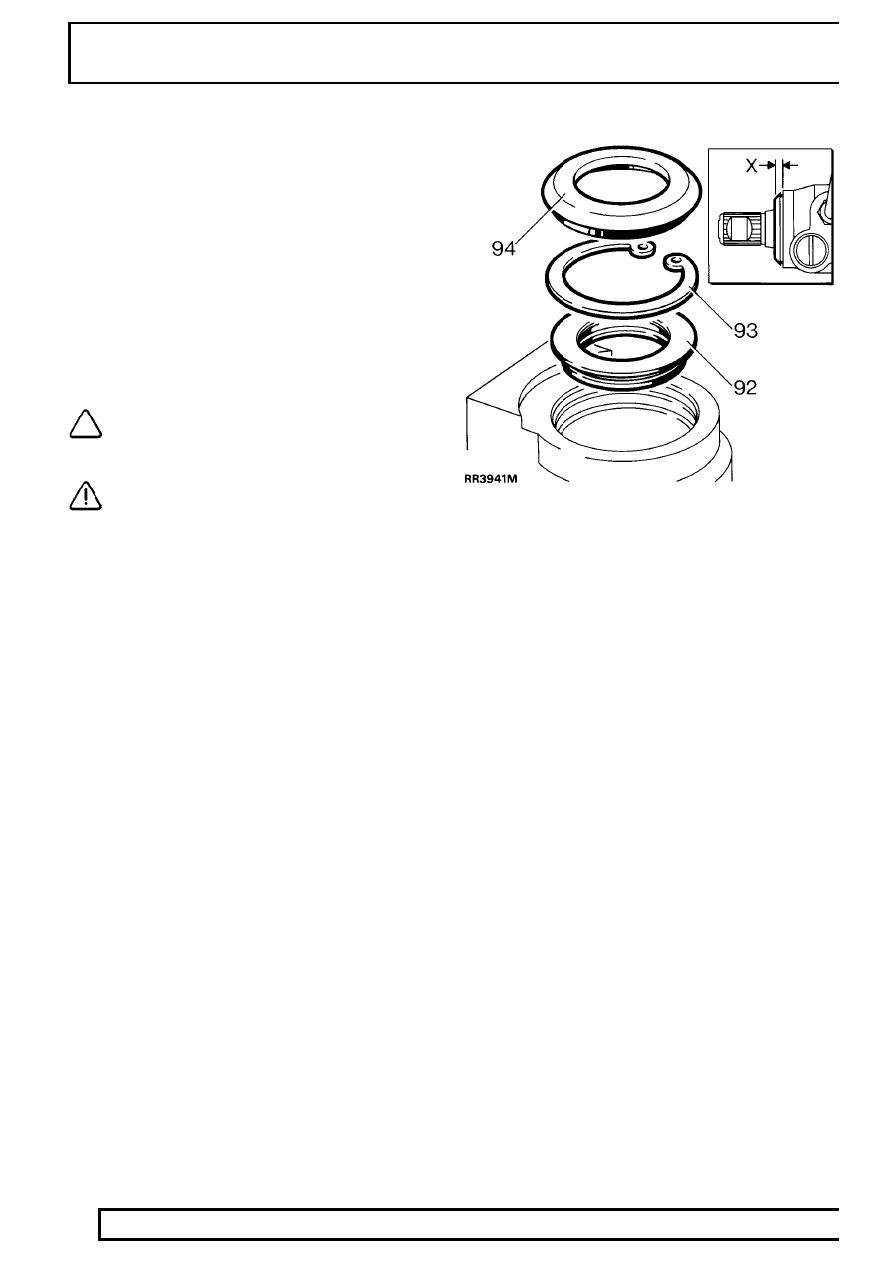Defender 90 NAS. Manual - part 62

57
STEERING
10
OVERHAUL
Adjustments
91. Note where greatest figures are recorded
relative to steering position. If greatest figures
are not recorded across centre of travel (steering
straight-ahead), adjust as follows:
If torque peak occurs before centre position, add to
shim washer value; if torque peak occurs after centre
position, subtract from shim washer value,
refer to
fitting valve and worm assembly .
Shim washers are available as follows:
0.03mm, 0.07mm, 0.12mm and 0.24mm
0.001in, 0.003in, 0.004in and 0.008in.
NOTE: Adjustment of 0.07mm, 0.003 in to
shim value will move torque peak area by
1/4 turn on the shaft.
CAUTION: When reshimming valve and
worm, extreme caution must be exercised
to prevent seal damage during
reassembly.
Input shaft oil seal
92. Fit seal, lip side first, into housing. Use seal
saver LRT-57-016and seal installer LRT-57-026.
Note that seal is fitted to a depth of 4.75 - 5.00
mm, 0.19 - 0.20 in from face of box.
93. Secure seal with circlip.
94. Smear inner lip of dirt excluder with grease. Fit
dirt excluder using LRT-57-027. When fitted
correctly outer shoulder of excluder is 4.00 - 4.50
mm, 0.16 - 0.18 in from face of box, dimension
’X’.
95. Remove drop arm. Smear inner lip of dirt
excluder with PTFE grease and refit, ensuring
outer lip is flush with casing.
96. With input shaft on centre, align assembly marks
on drop arm and steering box. Fit drop arm to
steering box using a new tab washer. Tighten
nut to
175 Nm, 130 lbf ft, bend over tab.
97. Fit steering box
See Repair, Power Steering
Box .